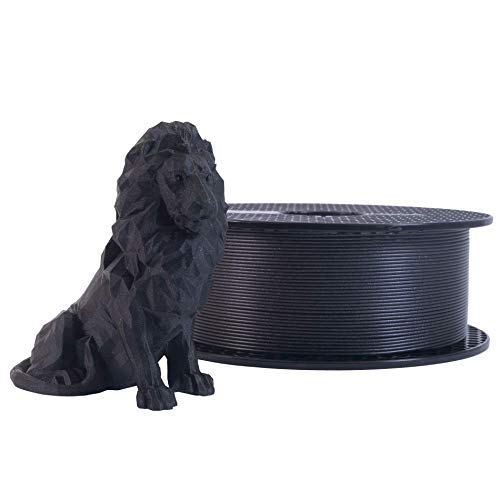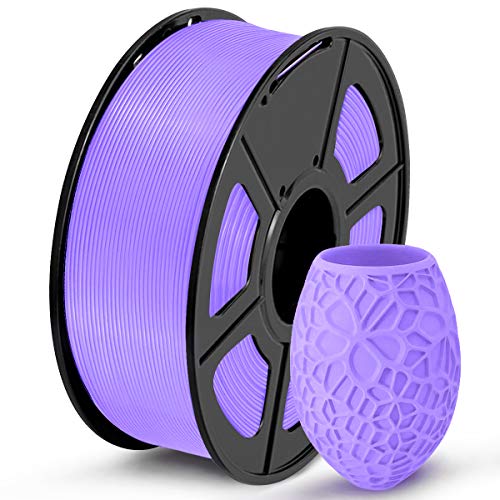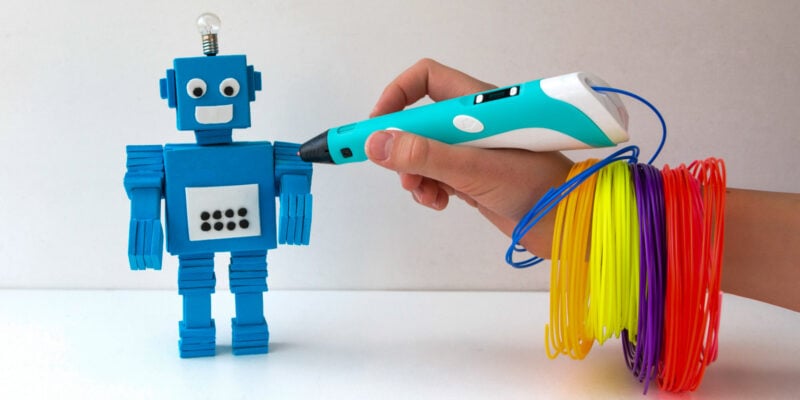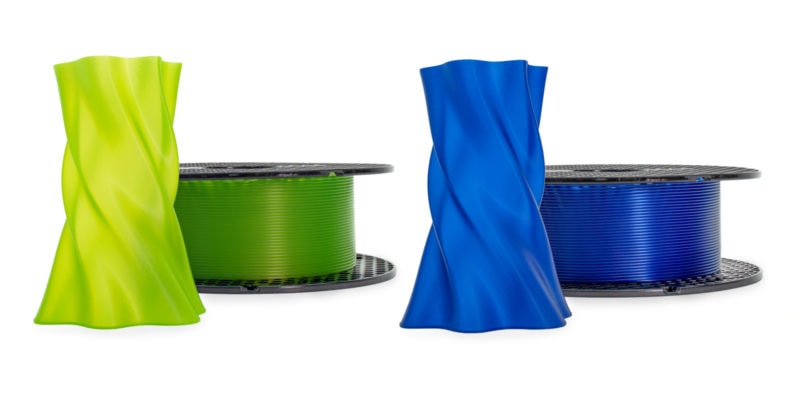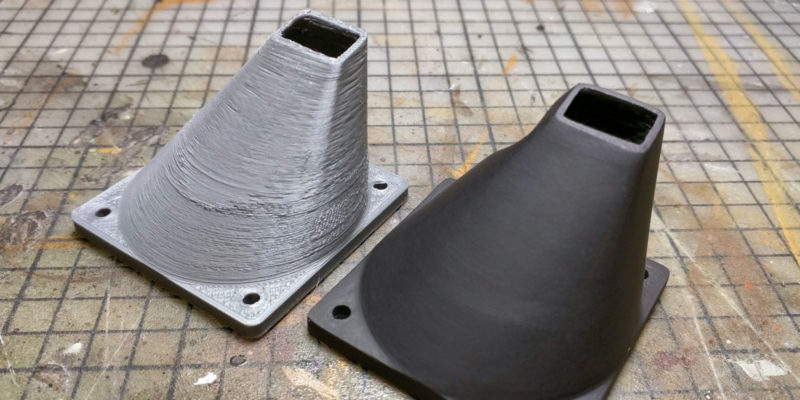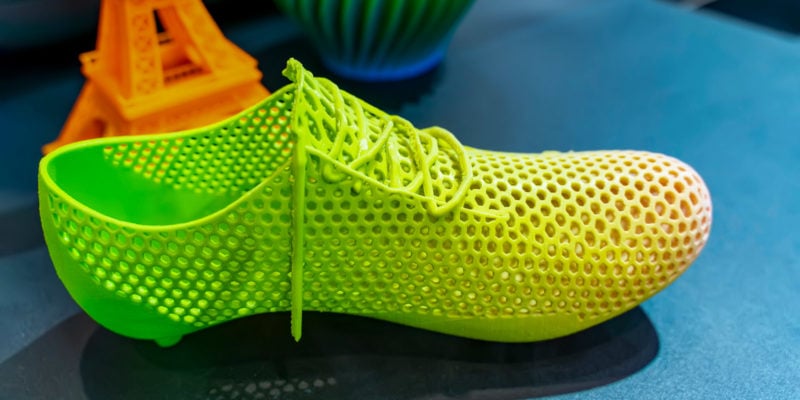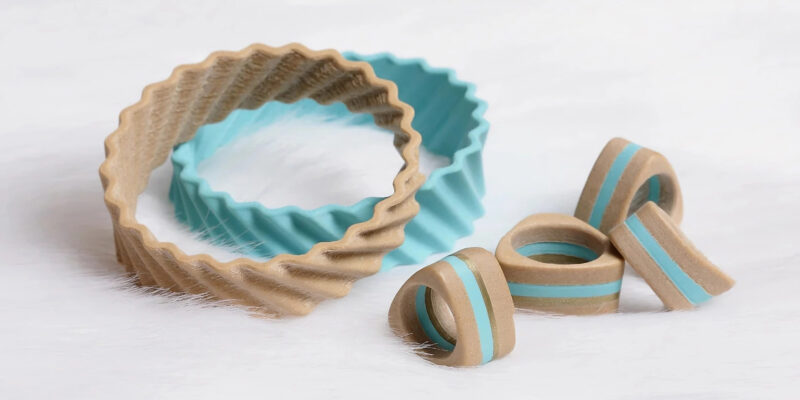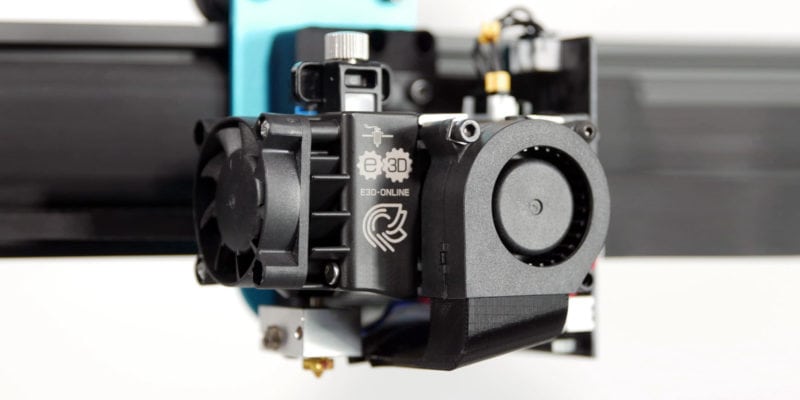PLA filament is one of the most popular materials for 3D printing, thanks to its ease of use and forgiving properties. However, if you’re just starting out, it can be difficult to know which brand is the best PLA filament and what to look for while buying it.
In this article, we’ll show you the ten best PLA filament brands on the market right now and explain what to look for when choosing PLA for your 3D printer.
| Best PLA Filament | Available Diameters | # of Colors | Price/kg (~) | Best Offer |
|---|---|---|---|---|
| Polymaker PLA Filament | 1.75mm, 2.85mm | 25 | $20 | |
| FormFutura PLA Filament | 1.75mm, 2.85mm | 19 | $35 | |
| Overture PLA Filament | 1.75mm | 21 | $23 | |
| Prusament PLA Filament | 1.75mm | 12 | $30 | |
| ColorFabb PLA Filament | 1.75mm, 2.85mm | 19 | $36 | |
| Hatchbox PLA Filament | 1.75mm, 3mm | 22 | $25 | |
| Ultimaker PLA Filament | 2.85mm | 11 | $50 | |
| Sunlu PLA Filament | 1.75mm | 19 | $21 | |
| Proto-Pasta HTPLA Filament | 1.75mm | 62 | $60 | |
| MatterHackers PLA Filament | 1.75mm | 32 | $20 |
Best PLA Filament for 3D Printing in 2024
Aside from offering standard PLA, Polymaker offers a varied assortment of special types of PLA, like PolyLite and PolyTerra.
PolyTerra PLA filament is designed to be an environmentally friendly alternative for users who are concerned about their 3D printer’s environmental impact. It comes on recycled cardboard spools and Polymaker plants one tree for every spool sold. PolyTerra is also slightly tougher than regular PLA and provides easier support removal.
Their PolyLite product is a premium PLA+ filament specially designed to avoid clogging or jamming the nozzle of your 3D printer. Note: PLA+ is a special blend of PLA. For more information we highly recommend our PLA+ vs PLA comparison guide.
Technical Details |
|
|---|---|
| Diameters Available | 1.75mm, 2.85mm |
| Spool Sizes | 1kg |
| Colors | 25 |
| Print Temperature | Nozzle: 190-230C Bed: 25-60C |
FormFutura is a premium Dutch brand that has some of the best PLA filaments of any manufacturer listed so far. Their standard EasyFil PLA is softer than most filaments to make it more flexible and impact-resistant. Since one of PLA’s biggest weaknesses is its brittleness, this is a welcome improvement.
They also have several specialty PLAs such as antibacterial, recycled, heat-resistant, high-gloss, tough, glitter, and dual-color. Additionally, they offer a wide variety of “filled” infused-PLA filaments containing materials like copper, bronze, stone, and cork.
With their versatile filament options, it’s easy to get the exact look you want from your prints with FormFutura PLAs. One thing to keep in mind is that their suggested nozzle temperature range is slightly higher than other filaments, so be aware that you might have to run your printer a bit hotter than usual with their products.
Technical Details |
|
|---|---|
| Diameters Available | 1.75mm, 2.85mm |
| Spool Sizes | 220g, 750g, 2.3kg, 4.5kg, 8kg |
| Colors | 19 |
| Print Temperature | Nozzle: 200-230C Bed: 50-60C |
As one of the more affordable options on the list, Overture PLA has amazing benefits for its price. Tested at 0.03mm +/- accuracy, their filament has better than average tolerances and gives more consistent results. It is five times tougher than regular PLA filaments and has a higher softening temp to avoid clogs and jams.
They also recently changed their product packaging towards the end of 2021, so all of their products now come on a more environmentally friendly cardboard spool. Coupled with their Eco PLA option that recycles the waste products from their other PLA products, Overture is one of the greener filament brands to choose from.
Technical Details |
|
|---|---|
| Diameters Available | 1.75mm |
| Spool Sizes | 1kg |
| Colors | 21 |
| Print Temperature | Nozzle: 190-220C Bed: 40-60C |
Made by the same company as high quality Prusa 3D printers, Prusament PLA is a high-quality filament at a great price. While many filament manufacturers aim for accuracy within 0.05mm +/- of the target diameter, Prusament is made and tested for a 0.02mm accuracy.
To ensure the spool’s quality, you can even check it yourself by scanning the QR code on the spool to bring up the quality control information for your specific batch.
These amazing tolerances result in better dimensional accuracy, surface finish, and overall print quality. This makes it an excellent choice for precision prints, like when 3D printing miniatures.
Additionally, you will experience fewer extruder jams in the printing process since the filament is closer to being a uniform size.
Technical Details |
|
|---|---|
| Diameters Available | 1.75mm |
| Spool Sizes | 970g, 1kg |
| Colors | 12 |
| Print Temperature | Nozzle: 215C Bed: 50-60C |
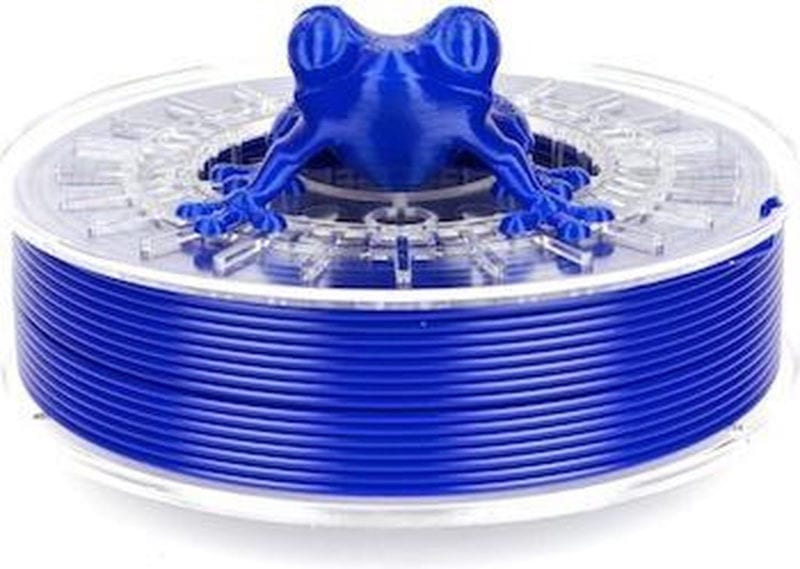
ColorFabb has a number of different PLA filament lines that combine excellent quality with innovative additions. Their standard PLA line combines PLA with PHA for added strength, flexibility, and impact resistance without compromising ease of use. You can expect great layer adhesion and dimensional accuracy, as well as smooth surfaces with ColorFabb filament.
In addition to the standard PLA products, they also offer specialty filaments. Their special lightweight PLAs combine a foaming agent that expands while printing for lighter parts. Their tough PLA line (only available in black and white at this time) gives prints even greater tensile strength than their standard PLA/PHA filaments.
Technical Details |
|
|---|---|
| Diameters Available | 1.75mm, 2.85mm |
| Spool Sizes | 750g, 2.2kg |
| Colors | 19 |
| Print Temperature | Nozzle: 195-220C Bed: 50-60C |
Hatchbox is one of the most well-known PLA filament brands in the 3D printing space. Hatchbox PLA filaments are affordable, available in many colors, and of adequate quality. They also have an excellent selection of specialty colors like glow in the dark, sparkle, metallic, and stone.
While Hatchbox PLA occasionally has some quality issues, they are a great option if you are looking for something affordable or are just starting out. You can easily get great print quality and smooth surface finishes with their filament. Plus, it tends to have a pretty pleasant smell while printing, so you don’t need to worry about noxious odors.
Altogether, you can’t really go wrong with Hatchbox PLA. This is one of the reasons why we have also included it in our line-up of the best Ender 3 filaments.
Technical Details |
|
|---|---|
| Diameters Available | 1.75mm, 3mm |
| Spool Sizes | 1kg |
| Colors | 22 |
| Print Temperature | Nozzle: 185-200C Bed: 60C |
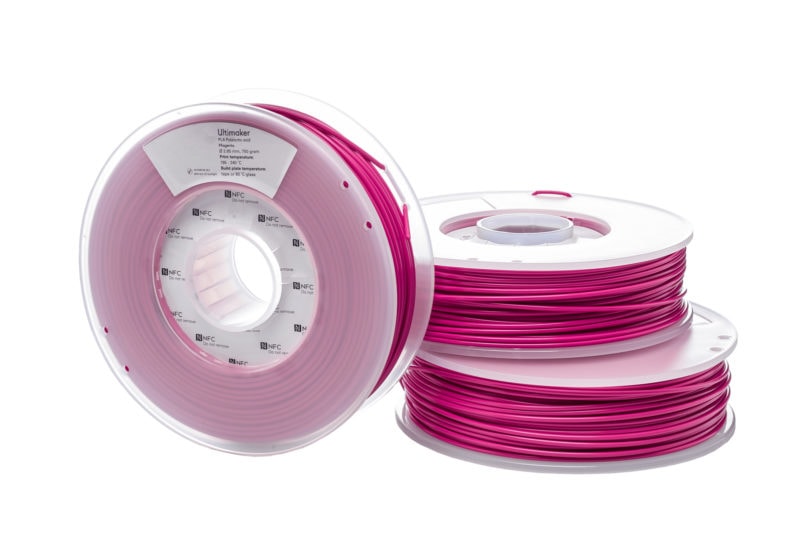
If you have an Ultimaker 3D printer, Ultimaker PLA filament is by far the easiest and best to use with your printer. Formulated specifically for the Ultimaker machines, this filament only comes in 2.88mm diameter, which makes it harder to use in a standard 3D printer.
While their offerings are not as varied as some of the other filament manufacturers on this list (especially for colors and special filaments), their filament stands out thanks to its great surface finish and reliable tolerance. This should definitely be your go-to PLA material as an Ultimaker user.
Technical Details |
|
|---|---|
| Diameters Available | 2.85mm |
| Spool Sizes | 750g |
| Colors | 11 |
| Print Temperature | Nozzle: 200-210C Bed: 60C |
Sunlu is another affordable option with excellent tolerances of 0.02mm +/- and plenty of color options to choose from. Sunlu PLA filament is a great choice if you want consistent quality on a budget. However, despite their many color options, it is often hard to find many of them in stock. Some users have also noted their products give off more 3D printer fumes than other brands of PLA filament.
Even so, their filaments produce excellent results. You get high detail, smooth PLA prints, good dimensional accuracy, and great layer adhesion with Sunlu PLA. Coupled with their affordable price, it is an excellent PLA filament to choose on a budget.
Technical Details |
|
|---|---|
| Diameters Available | 1.75mm |
| Spool Sizes | 1kg |
| Colors | 19 |
| Print Temperature | Nozzle: 200-230C Bed: 60-80C |
Proto-Pasta is well-known for its high-quality and specialty PLA filaments. As one of the first brands to offer options like conductive, carbon fiber, coffee, and even bacon PLA, they have gathered a following of loyal customers. Their HTPLA is also a popular item that prints like other PLA filaments but has higher temperature resistance when heat-treated after printing.
Aside from being known for its experimentation with small-batch specialty filaments, Proto-Pasta has also been quite transparent about its manufacturing process. Altogether, Proto-Pasta PLA filaments are a safe choice in our book.
Technical Details |
|
|---|---|
| Diameters Available | 1.75mm, 2.85mm |
| Spool Sizes | 50g, 500g |
| Colors | 62 |
| Print Temperature | Nozzle: 195-225C Bed: 60C |
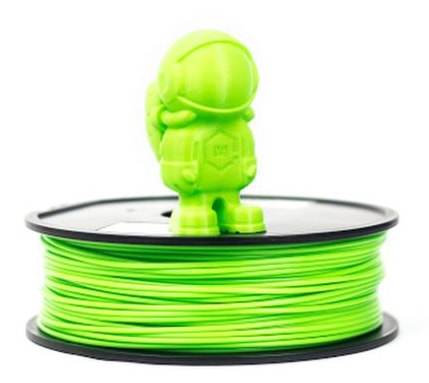
Made to be a basic budget-friendly option for price-conscious makers, the MatterHackers Build PLA series is a great option for beginners. With price discounts when you buy multiple spools, MatterHackers PLA is perfect for large projects like 3D printed cosplay armor, 3D printed helmets, and cosplay props.
While MatterHackers’ PLA filament is a great way to enjoy 3D printing without a steep price tag, their basic PLA does tend to have some quality issues (like excessive stringing) that can take some tinkering with print settings to fix. They also have a Pro PLA line that is better suited for users looking for a more premium product.
Technical Details |
|
|---|---|
| Diameters Available | 1.75mm, 2.85mm |
| Spool Sizes | 500g, 1kg |
| Colors | 32 |
| Print Temperature | Nozzle: 205-220C Bed: 40-55C |
What to Look for When Buying PLA Filament
As you probably realized while reading through the differences between the brands listed above, PLA filament can differ significantly from one brand to the next. Which type you choose depends on how you intend to use it, but there are a few general things to watch for when choosing the best PLA filament for you.
Consistent Filament Diameter
One of the most important factors to consider when choosing a PLA filament is diameter accuracy (also referred to as tolerance). This is how accurately the diameter filament stays throughout the spool. It’s common to have slight variances in size from one part of the spool to the next.
Consistent diameter is essential for making quality prints. Most 3D printers can’t tell how much plastic is going into the extruder. It bases it on the measurements we give it in the GCode, so if it gets less or more plastic at certain points of the print, it still outputs it from the nozzle at the same rate. This can lead to messy-looking or even failed prints depending on how much the diameter fluctuates.
Inconsistent filament size can also lead to jams, clogs, and other mechanical failures in your 3D printer. Since a section of filament being wider than the standard diameter can not only be too large for the inner mechanisms of your extruder, it can also lead to too much plastic being fed into your nozzle at once.
Most brands have a tolerance of 0.05mm, meaning the filament may be 0.05mm larger or smaller than the advertised diameter at certain points in the spool. Some brands like Prusament and Overture have slightly better tolerances, meaning they will typically print better and with more accuracy.
Impurities
Impurities in 3D printer filament are common among cheap brands and can pose risks to yourself, your machine, and the environment. There aren’t currently many regulations into what can and cannot be put in 3D printing filament or how it is disclosed on the packaging.
PLA (polylactic acid) itself is a biodegradable thermoplastic made from organic materials like corn starch and sugar cane. It’s one of the most popular filaments for 3D printing because of its natural composition, mild odors, and general ease of use.
PLA filament is rarely 100% pure PLA. If you get a colored filament, it has additives to dye it the necessary color. Sometimes other materials are added in small quantities to give the filament certain characteristics (like being more flexible). Other times, impurities are released into the filament from the manufacturing machinery during the extrusion process.
All of these factors make it difficult to ascertain exactly what is in the PLA filament we purchase. Therefore, it is more vital than ever to find a reputable brand that you trust. Most of the high-quality brands are quite transparent about their manufacturing process and what goes into their products.
These additives impact many things about the filament, like whether the PLA is food safe, how well you can melt the PLA, whether the PLA is biodegradable.
Color Consistency
You’ll want to look for color consistency between different spools of filament. If color is not consistent between batches of 3D printer filament, you can run into all sorts of issues. If you have to switch to a new spool mid-print, you’ll be able to tell where the new spool starts if the colors don’t match. You may also have difficulties selling your 3D prints and making money with your 3D printer if you can’t make your products look consistent.
Packaging
Any roll of 3D printer filament you purchase should come vacuum-sealed in a plastic bag. This ensures no moisture can get absorbed by the filament while it is in transport or storage. Most manufacturers also put a packet of silica gel in the packaging to absorb any moisture the drying and vacuum-sealing processes might have missed.
If you live in an environment with high humidity or run into issues with brittle PLA, you might want to look at a filament storage or dry box solution to prevent your PLA filament from getting ruined.
You’ll also want to consider what type of spool you prefer. 3D printer filament traditionally came on plastic spools (most brands still do), but some have been trying to cut back on the impact of their packaging and have opted for cardboard instead. Beyond the environmental benefits, cardboard spools are lighter during shipping, so you should take that into consideration as well.
Filament Winding
You’ll want to buy PLA filaments with nice, consistent winding on the spool. If the filament is tangled, it will break. This often leads to a failed 3D print, frustration and wasted filament.
Problems With Cheap PLA
While cheap PLA filaments may seem inviting, you usually get what you pay for. Aside from having many of the issues listed above, cheap PLA doesn’t print as well or as consistently as a higher-quality filament. You can also run into problems with PLA not sticking to the bed, or brittle PLA straight out of the box. There can be implications for the PLA shelf life too.
Any money saved on cheap PLA filaments tends to even out with more failed prints and higher amounts of waste. Not to mention, poor quality filament can be harder on your 3D printer, so you will need to replace parts or maintenance your machine more often than with proper filament.
Of course, even the best PLA filaments won’t give you good results if you don’t know the proper techniques and printer settings to use with them. So always make sure to use the right PLA print settings to get the best results.
Which is the Best Brand of PLA Filament?
Each brand has its benefits and drawbacks, so it really depends on your needs. If you need something quality but inexpensive, MatterHackers Build Series, Hatchbox PLA, or Overture PLA Pro are great options.
If you want high-quality and are willing to pay more, Proto-Pasta is ideal. If you want specific benefits like a special color or more tensile strength, you will have to evaluate each brand individually.
What Filament is Stronger Than PLA?
Carbon Fiber, Nylon, ABS, and even PETG are stronger than PLA plastic. These options are much harder to print with than PLA filaments and require more advanced features on your printer (a heated bed, for example). For more information on these materials, you can check out our comparison of PLA vs ABS and PLA vs PETG filaments.
If you want slightly stronger prints while still keeping the easy printing of PLA filament, try one of the tough or premium brands listed above. They will give you a higher tensile strength without requiring the high temperatures of different 3D printer filament materials.
If you do want to 3D print with a different material than PLA, we have excellent guides on the best ABS and best PETG brands you can choose from.
What is the Strongest PLA?
Many of the brands listed above have tough or premium lines of PLA filaments that are much stronger than standard PLA. ColorFabb PLA (tough or PLA/PHA), Overture PLA Plus or FormFutura Tough PLA are some of the strongest options currently available.
Is PLA+ Better Than PLA?
PLA+ includes many different PLA filaments that have other components added in to give it certain properties (usually to make it stronger or more heat resistant). While PLA+ products do usually have significant advantages over regular PLA, they can also have big disadvantages.
For example, PLA+ can have significantly more issues sticking to the bed than regular PLA does.
PLA+ is such a broad term that varies from brand to brand. As such, it is difficult to definitively say whether or not one is better than the other. It all depends on the application. You can learn more about the differences between the two materials in our PLA vs PLA+ comparison guide.
How Much Does 1KG of PLA Cost?
The cost of a spool of PLA filament depends on the brand and whether or not it is a specialty PLA. A very basic roll of PLA ranges around $15-25 per kg. A premium or high-quality PLA spool can cost between $35-$55.
Conclusion
There are so many brands of PLA filament on the market that it can be hard to know which is the best PLA filament for you. We gave you ten of the best PLA brands for sale right now, with many of them having a variety of options available for you to explore.
Do you use any of our suggested brands? Let us know your favorite in the comments!






